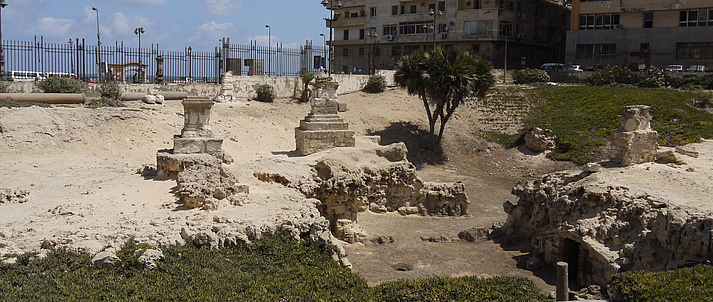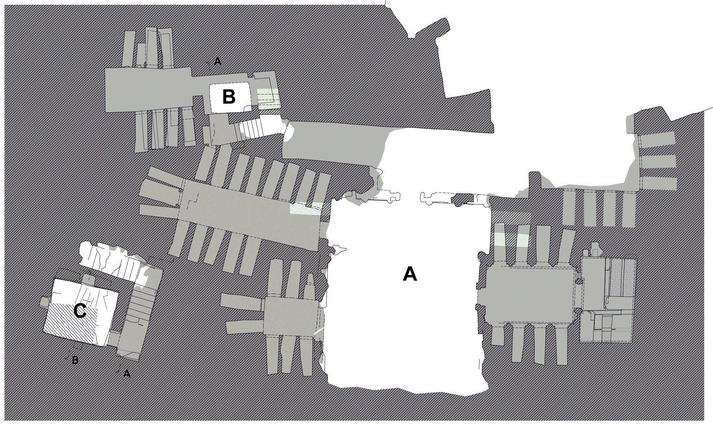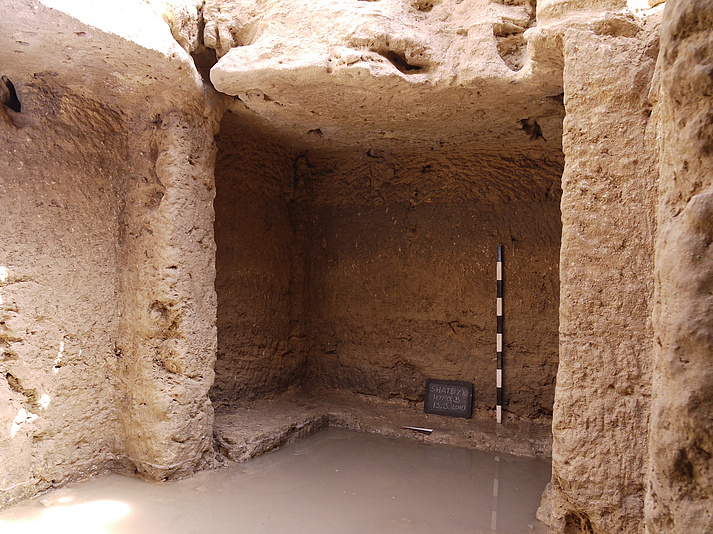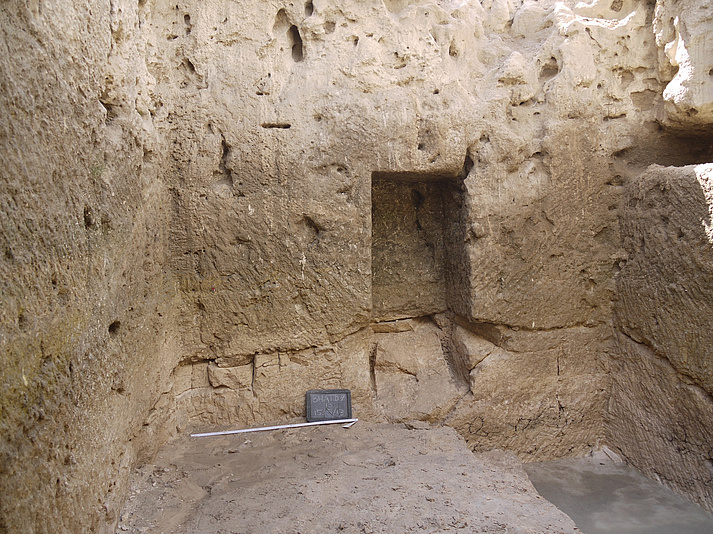Alexandria – Shatby
Alexandria was founded in 331 BC by Alexander the Great and swiftly grew to become the metropolis of the ancient Mediterranean region. Here, for the first time in history, a population gathered from all corners of the Ancient world, organising its cohabitation according to the model of a Greek city state. The early necropolis in todays Shatby district exemplifies the constituting and self-perception of the urban society based on forms of cemetery representation. Due to its location within the surrounding defensive wall from the Roman imperial age, it seems that the necropolis was not used any longer after the city’s expansion.

Excavations in the Early 20th Century
Evaristo Breccia’s excavations on the site during the years between 1904 and 1910, as well the published results left questions regarding spatial concept, building history and age determination of this necropolis unanswered. Between 2010 and 2014, the Academy of Sciences and Humanities therefore performed follow-up investigations in parts of the old excavation area still accessible today: the big Hypogaeum A was resurveyed and documentation mistakes from 1912 were corrected. The Hypogaeum B, so far without any excavation documentation, was again exposed and documented in detail. Another subterranean tomb (C) was explored for the first time.

Necropolis and Urban Development
It was possible to clarify the sequence of construction activities in the individual tombs as well as the tombs’ relative chronology. This mirrors the gradual development of a specific Alexandrian way of entombment, which attached major importance to the exclusive emphasis of collective burials. Furthermore, in all investigated sites there was circumstantial evidence of a sudden abandonment of burial activities. Especially building C proved to be an abandoned construction site that never served any burial purposes. Proof of building C already being used as a temporary living quarter in the second half of the third century BC, is based on ceramic finds. The date of this occupation is also a chronological indication for the end of the necropolis as a whole and the date of the urban expansion. Some one hundred years after its foundation, Alexandria was already so attractive, that the originally generously assessed urban area did not suffice anymore.


Literature
Christoph Rummel – Stefan Schmidt, Die frühhellenistische Nekropole von Alexandria-Shatby. Studien zur antiken Stadt 17 (Wiesbaden 2019)
Stefan Schmidt, Alexandria: Neue Forschungen zur antiken Großstadt, in: Akademie aktuell, 45, 2014, H. 4, 44–49.
Stefan Schmidt – Christoph Rummel, Shatby Revisited, in: Bulletin de la Société Archéologique d’Alexandrie 49, 2015, 45–62. (see full text PDF)
Further Information
Project Lead
Prof. Dr. Stefan Schmidt
Bayerische Akademie der Wissenschaften
Alfons-Goppel-Str. 11
80539 München
E-Mail
Funding
This project is funded by the Bavarian Academy of Sciences and Humanities.
